Properties with plaster or monolithic cladding can be risky purchases, but they're not all leaky.The leaky homes crisis is one of New Zealand’s largest and costliest man-made messes, with estimates that around 174,000 homes were affected. The total cost to fix all of our country’s leaky homes could be as high as $47 billion, according to the experts. The crisis kicked off in the late 80s, early 90s but unfortunately for home buyers and investors it’s far from over, and these leaky homes are still out there being bought and sold. That means. if you don’t know what to look out for. you could end up with an unsafe property that might cost hundreds of thousands of dollars to fix. To make sure you don’t buy a soggy lemon check out our guide to spotting and buying (or avoiding) leaky homes in NZ. What are leaky homes? Leaky homes are residential properties that are not watertight. These were typically built between 1987 and early 2005 using certain materials and building practices that made homes more vulnerable to leaking, and more at risk of structural damage if a leak occurred. Affected homes may be excessively damp and mouldy inside and even structurally unsound if the framing timber has rotted. These problems tend to make homes unhealthy to live in, causing respiratory illnesses and infections, exacerbating allergies and affecting the immune system. Leaky homes can also be incredibly expensive to fix - full recladding can cost hundreds of thousands of dollars. Needless to say, leaky homes are best avoided in most cases. What caused the NZ leaky homes crisis? Countless factors contributed to the NZ leaky homes crisis, each making the problem worse. It all started in 1987 when monolithic or plaster cladding re-emerged as a popular building material, then got progressively worse thanks to a mix of bad legislation, shoddy materials, poor workmanship and risky design practices. Monolithic cladding, or plaster Monolithic cladding, otherwise known as plaster cladding, is often named as the main culprit of the leaky homes crisis. This material tends to crack slightly if not maintained properly, allowing moisture into the frame below and progressively getting worse. Monolithic cladding gave homes a smooth, seamless look that was in fashion at the time - but it turns out that look wasn’t conducive to watertightness. If you’re considering buying a home that looks like this, it’s worth investigating further as it may be at a high risk of leaking. Not all plaster homes leak, but they may be at a higher risk. Shoddy building practices The majority of homes in Aotearoa New Zealand don’t have watertight exterior cladding. In fact, most exterior claddings are not 100% waterproof and a small amount of rain or other water may leak through inside. This isn’t a problem as long as there’s a gap or cavity between the exterior cladding and the framing that allows the water to dissipate. From 1987 onward builders started to fix monolithic cladding directly to the timber frame behind it, with no cavity. That meant that when the cladding leaked, the timber framing behind and the inside of the home could become damp or even rotten, compromising the structure of the property. The moisture could then leak through to interior cladding, insulation and interior flooring. To make matters worse, untreated kiln dry timber was permitted by the building code from 1996 onward, which meant that when the cladding leaked the timber had no protection from the moisture and quickly became damp. For most of these buildings their one line of defence was a special waterproof paint that tended to work at first then fail after a few years. Risky designs According to building experts, there are several design features that increase the risk of leakiness and are worth looking out for. These include:
While having these features doesn’t mean a home is leaky, it does indicate that the property may be a high risk and further inspection is required. How can I spot a leaky home? If you’re in the market for a property you should always keep a close eye out for leaky homes. Here are a few things to look for. If you keep your eyes open during a property inspection you may be able to spot signs that a home is leaky. Risky periods for leaky buildings The first thing to consider when looking out for leaky homes is when the property was built, as the highest risk period is between 1987 and early 2005, according to Prendos: Before 1987: low risk. 1987 to 1996: high risk. 1996 to early: 2005: high risk. 2005 onward: low risk. Homes built outside these high risk periods can still be leaky, so you still need to do your due diligence when buying. Warning signs for leaky homes You should always have a building inspection done on a home before you purchase it as this will alert you to any signs that it’s leaky. According to Building Performance NZ, these may include:
You may even notice visible cracking of the cladding, a slightly damp feeling in the carpet (if you’re barefoot) and a musty smell. While you can look out for these warning signs, many leaky homes may not appear leaky at all. That’s why it’s so important to purchase a building inspection before buying any home, and ask your inspector to pay special attention to moisture levels and whether the home has a cavity between the cladding and the frame. If you suspect a home you’re looking at may be leaky it could even be worth purchasing a specialist water tightness inspection, which will investigate the property’s cladding in more detail. Not all plaster homes are leaky but they should be approached with caution. How much do leaky homes cost to fix? Many Kiwis still buy leaky homes, despite their terrible reputation and the high level of risk. The fact is, if the land it's built on is valuable enough, and the price is very low, a leaky home can still be a good buy, if you know what you’re doing. However, it’s worth considering that fixing a leaky home can cost $330,000 to $380,000 on average, or over $500,000 in the worst case scenario, according to Opes Partners. What’s more, the bank may not lend according to the future value of the house once it's fixed, so it may be difficult or impossible to borrow the money needed to fix the property. That means you’ll need cash or usable equity to fix up the property, a process that could take anywhere from three months to over a year. Should I buy a monolithic cladding or plaster house? Monolithic cladding and plaster homes aren’t all bad. But if you’re looking at a home that has this type of cladding it’s important to investigate further to ensure that it’s not a leaky home. If the home does not have a cavity between the cladding and the framing, chances are that it will leak at some stage even if it hasn’t yet. Plaster homes built post 2004-2005, that do have a cavity, may be ok. If you find a home that doesn’t have a cavity and shows evidence of leaking, you should take great care when buying. These homes can still be a good deal, but they should be priced extremely low to factor in the potentially huge cost of recladding. Before buying you should hire a building inspector and surveyor, get detailed quotes for repairs, and be certain that the home will be worth at least as much as the repair, plus purchase price once you’ve refurbished it. *We hope this article has provided some helpful information. It's based on our experience and is not intended as a complete guide. Of course, it doesn’t consider your individual needs or situation. If you're thinking about buying or selling a property, you should always get specific advice, especially if you suspect it’s leaky.  Ben Tutty Ben Tutty is a regular contributor for Trade Me and he's also contributed to Stuff and the Informed Investor. He's got 10+ years experience as both a journalist and website copywriter, specialising in real estate, finance and tourism. Ben lives in Wānaka with his partner and his best mate (Finnegan the whippet). Savvy Houz Inspections - www.savvyhouz.co.nz - 021 143 2995
0 Comments
Exploring Tomorrow’s Building Inspections In the ever-changing world of construction and real estate, building inspections are vital for safety and compliance. But as we look ahead, technology is transforming how we assess buildings, making it smarter and more efficient. Let’s dive into the exciting ways tech is revolutionising house inspections. Robot Assistants for On-site Checks Picture drones equipped with high-tech cameras and sensors, navigating through buildings to capture detailed data. These robotic helpers speed up inspections and make it safer to assess tricky spots like rooftops. AI: Your Inspection Sidekick Artificial Intelligence is like having a super-powered assistant for analysing inspection data. It sifts through loads of information, spotting issues and patterns that humans might miss. This predictive power helps nip problems in the bud, saving money and ensuring buildings stay strong over time. Virtual Reality: Previewing Problems Virtual Reality lets inspectors step into a simulated building environment before they go on-site. This sneak peek helps them plan better and understand a building’s condition more thoroughly. They can even simulate different scenarios to prepare for any surprises. IoT Sensors: Keeping Tabs in Real Time Imagine sensors throughout a building, constantly monitoring temperature, humidity, and structural movement. They send instant alerts if anything seems off, so owners can act fast and prevent disasters, prolonging the building’s life. Handy Apps for Quick Inspections Mobile apps are becoming must-haves for inspectors. They’re easy to use, helping inspectors snap photos, jot down notes, and generate reports on the spot. This cuts down on paperwork and speeds up the whole house inspection process. In Conclusion: The future of building inspections is all about marrying technology with tradition. From drones to AI, each innovation makes inspections more accurate and efficient. By embracing these advancements, we’re not just making inspectors’ jobs easier – we’re making buildings safer, stronger, and more compliant. It’s an exciting time for the construction industry, with technology leading the way towards a smarter future. Savvy Houz Inspections - Christchurch - www.savvyhouz.co.nz - 021 143 2995 Call now 021 143 2995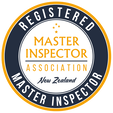 The Weathertight Homes Tribunal has ordered that a house inspector jointly face liability with Christchurch City Council in a claim for a leaky extension. A retired house inspector is facing part liability for a $700,000 leaky building claim after he provided a pre-purchase inspection report that a council alleges was negligent. But the retired inspector believes he has a good case to fight the claim. Keith Milne told the Herald on Sunday the Christchurch house he inspected in May 2010 would have been markedly different from when the weathertight problems were found two years later because there were two major earthquakes and hundreds of aftershocks in the intervening period. Milne says he noted at the time of the inspection that the extension where the problems emerged was constructed in a style that has since been found to have moisture issues, and that his moisture tests could not be invasive tests without removing wall and ceiling linings. A claim was originally made by the homeowners against the Christchurch City Council. However, the council has successfully applied to the Weathertight Homes Tribunal to have Milne face a share of the liability. In the tribunal’s decision published in April, chairman Paul Cogswell concluded the homeowners could have a claim against Milne, therefore the council did too. The saga began on May 13, 2010 when James Cooney and Paul Dempsey signed a sale and purchase agreement for the house in Scarborough, subject to a satisfactory pre-purchase inspection. Milne provided a report on May 17 that year when he was co-owner in a Christchurch franchise of The NZ House Inspection Company. The report said the house, which now has a capital value of $1.3 million, was in generally good condition. Some cracks were noted in the exterior cladding and repair was advised. It said moisture levels where tested were good but the house had been built in a style that had problems with moisture ingress and regular inspection was advised with prompt attention to any defects found. It concluded an extension was relatively sound and did not warrant further investigation or raise significant concern. The report contained limitations and exclusions including that invasive testing was not undertaken and areas that were concealed, contained, inaccessible or that could not be seen due to walls, ceilings, floor installations, and other objects would not be inspected. The claimants went ahead and bought the house but in August and November 2012, the extension on the house was assessed as having leaky issues. These included:
He said many of the defects could have been seen on visual inspection, and that many found in 2012 would have existed at the time of the pre-purchase inspection report. The claim against the council was that it failed in its consenting, inspecting, and certifying role as the relevant territorial authority. However, the council claimed there was negligent misstatement or breach of the Fair Trading Act 1986 by Milne because of the alleged defective inspection. “The situation is that the council seeks an indemnity or contribution from Mr Milne for any amount it is ordered to pay the claimants despite there being no claim by the claimants against Mr Milne.” Cogswell said negligent misstatement was arguably met as Milne was “arguably imposed with a duty of care when preparing the report for the claimants, the report was arguably negligent and the claimants arguably relied on it, causing them loss.” He found that Milne could face a claim in contribution or indemnity from the council arising from his alleged breach by preparation of an allegedly negligent pre-purchase building report. “Such a finding provides the basis to conclude that there is a legally tenable cause of action against Mr Milne.” Read More:
He accepted there was also liability under the Fair Trading Act in relation to the alleged “misleading pre-purchase inspection” report. Milne said he retired in 2015 and wound up the inspection business, no longer had liability insurance, and couldn’t understand why the claim had dragged on for a decade. He said he would be forced into bankruptcy if he lost. “It’s not much fun to have that hanging over you.” Christchurch City Council said it could not properly comment while the case was ongoing. Natalie Akoorie is the Open Justice deputy editor, based in Waikato and covering crime and justice nationally. Natalie first joined the Herald in 2011 and has been a journalist in New Zealand and overseas for 27 years covering health, social issues, local government, and the regions. A detailed guide for the first home buyer to make an informed decision on the best property. 
Buying your first home can be an exciting but overwhelming experience. There are many factors to consider, from finding the right home to securing financing and navigating the legal process. Here’s a guide for first home buyers in Auckland and the process involved.
Budget It’s important to set a budget before you start looking for a home. Consider your income, expenses, and any other financial obligations you may have. This will help you determine how much you can afford to spend on a home and what financing you may need. Pre-Approval Getting pre-approved for a mortgage is a crucial step in the home-buying process. This involves meeting with a lender to determine how much they’re willing to lend you based on your financial situation. This will give you a clear idea of your budget and help you avoid disappointment later on. Finding your dream home Once you have a budget and pre-approval, it’s time to start looking for a home. Consider your needs and wants, including location, size, and style. Work with a real estate agent to find properties that meet your criteria and schedule viewings. Due Diligence Before making an offer, it’s important to conduct due diligence on the property. This includes getting a building inspection and checking for potential issues or red flags. You may also need to obtain a LIM report (Land Information Memorandum) from the local council to ensure there are no outstanding issues with the property. Make your Offer Once you have found a property you love, it’s time to make an offer. Work with your real estate agent to determine a fair price based on market conditions and the property’s condition. Your agent will then present the offer to the seller’s agent and negotiate on your behalf. Finalisation of the Sale & Purchase If everything checks out, it’s time to finalise the sale. Work with your real estate agent and lawyer to draft a sale and purchase agreement, which outlines the terms and conditions of the sale. Once both parties have signed the agreement, the sale is considered binding. Moving In Congratulations, you’re now a homeowner! Once the sale is finalised, it’s time to move in and make your new house a home. This may involve hiring movers, decorating, and making any necessary repairs or renovations. In conclusion, buying your first home can be a complex process, but with the right preparation and guidance, it can also be a rewarding experience. By setting a budget, getting pre-approved for a mortgage, finding the right property, making an offer, conducting due diligence, finalising the sale, and moving in, you can successfully navigate the home-buying process and start building equity in your own home. If you need help with your home-buying journey, we would love to help. . Call us today for your free quote - 021 143 2995 - www.savvyhouz.co.nz How to understand your building report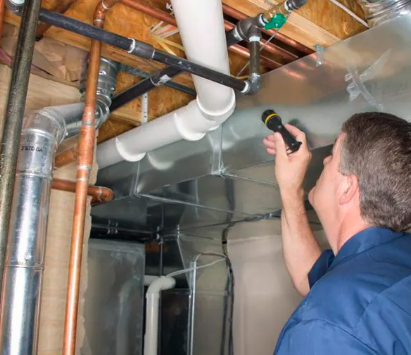
When you're on the exciting journey of buying a new home, there are a couple of important steps to take beyond agreeing on the price. One of these steps is looking at the "builder's report." Think of this report as a detailed check-up for the house, carried out by a qualified inspector. They go through the property meticulously, looking for any signs of past or present damage and areas where materials might not be up to the best standards. This can happen before or after you've agreed on the price with the seller.
Getting a building inspection is like having someone assess the possible risks associated with the property you're interested in. It helps you figure out what maintenance tasks you might need to take care of in the future if you decide to buy the place. However, there's a thing you should keep in mind—don't expect the report to be all positive. Even brand-new houses can have minor issues, and older ones might have a longer list of things that need attention. Here are five friendly steps to help you go through your builder's report: Prepare Yourself: Remember, the building inspector's job is to find anything that could be less than perfect with the property. They're not there to tell you how great the house is. So, keep in mind that you might not get the reassurance you're hoping for from the report. It's a bit like taking a deep breath before looking at the results. Get Some Perspective: Almost every builder's report will point out areas that could be better and might require some spending to fix. Building standards have improved over time, so comparing an older house to a new one isn't exactly apples to apples. When you're reading the report, think about whether the issues are common or urgent. Is it something you need to tackle right away, or can it wait a bit? Translate the Technical Stuff: Building inspectors have a tough job. They can't predict everything, so they often highlight worst-case scenarios to make sure you're prepared for anything. Don't hesitate to call the inspector and talk about any concerns you have. When you hear about the issues in person, they might not sound as daunting as they do in writing. And if you can, meet the inspector on-site at the end of their inspection to discuss any big concerns face-to-face. Ask for Cost Estimates: Inspectors often have hands-on building experience and might be able to give you a rough idea of how much it could cost to fix an issue they found. You can ask them: "If this was your house, what would you do to fix this problem, and how much might it cost?" Be Prepared for Common Problems: Every era of construction has its own set of typical problems. For example, older houses might have specific plumbing issues, while newer ones could have problems with roofing. The key is that there's no such thing as a perfect house. Older homes might need more ongoing care, but they often come with great benefits like nice locations and established surroundings. In a Nutshell... Ask lots of questions. If you're not sure about something major, ask for clarification. Is the issue dangerous? How soon does it need fixing? What's the estimated cost? And most importantly, remind yourself why you fell in love with the house initially. Think about the things that make the home special beyond what's mentioned in the report—like sunlight, access, location, and nearby schools. If you still love the house but the repairs seem overwhelming, talk to your real estate professional. Sometimes, the sellers might be willing to help with repairs or costs. Before you give up on a home you adore, make sure you explore all your options. Contact Savvy Houz Inspections today on 021 143 2995 or www.savvyhouz.co.nzDo I need an Inspection for a new Build?
While it may seem like common sense to assume that your builder will have double-checked everything before turning over the keys to a new home, it is extremely common to find defects in construction, unfinished technical work, or general finishing left incomplete. Without a final inspection, buyer beware is more than just a trite saying – you’re opening yourself up to the risk of having to carry out repairs and improvements on your near-new home.
In many cases, it is up to the new owners to determine whether they want an inspection when they purchase a home, or whether they are willing to take the property ‘as is’. If you forego inspection, you miss out on some of the important protection that home inspections provide. When inspectors and real estate professionals were asked whether they recommended new homeowners to take out an inspection on their home, they invariably say yes. · An inspection may point out things that the builder or real estate agent wouldn’t tell you, or might not even notice. It’s easy to miss small defects in your own work. · Dependent upon your contract to purchase and any warranties offered by the Builder, if there are problems, you’ll have the opportunity to have them corrected before taking ownership, or at least to have the knowledge of what you’re getting into after the home is yours. · Some building inspectors will relate identified defects back to a relevant New Zealand Standard or Building Code, to assist in ensuring all defects are rectified by the Builder in a timely matter. · Real estate is the single biggest investment that most people ever make – and the cost of carrying out repairs and improvements on a home that you thought was faultless would outweigh the cost of a simple building inspection by far. Contact Savvy Houz Inspections today on 021 143 2995 or www.savvyhouz.co.nz . Palmerston North first home buyers Trang and Kelvin Thomas discover their new home has, contrary to a real estate agent report, a leaking roof and will cost at least $45,000 to repair. The seller-supplied building report noted some dents in the roof could make water pool, and some of the cladding to roof junctions are reliant on paint to remain waterproof.  Kelvin Thomas and Trang Dong say they relied on a seller’s building report when they bought their first home, and now face a $43,000 bill for a new roof after leaks appeared months after settling. The couple, who settled on their Palmerston North home in August 2021, say they noticed the first leak about three months after settling. The leak in the garage was minor, and Thomas said the family didn’t take any action against the previous owners or real estate agents because they thought it would be an easy fix. Then in February last year, heavy rains resulted in water started dripping inside the house, he said. Kelvin said the leaks began in his daughter Emma’s bedroom, and then in the living room, and the family had to leave buckets out. “My daughter's room is leaking everywhere, she can’t sleep she’s so scared,” Dong said. “We had to move her into our bedroom.” The couple paid a handyman $900 to do remedial work when they noticed the leak in the garage, but the leaking got worse, and they paid $1300 more for repairs in March. Issues continued, and in July, the couple paid for a roofer to do an inspection. The report, by Streamline Roofing, found that the roof was in “extremely poor condition and requires a full roof replacement”. There was a significant amount of rust over the entire roof and the internal gutter, which was most likely to be leaking on to the ceiling, the report said. “Many of the nail holes are rusted, as well as missing washers, or not having the washers properly in place.” The roofer also pointed to poor workmanship in other areas of the roof, and tape that had been applied over rusted areas and holes, which would not keep water from leaking through. “At the back of the house, new iron has been installed however the iron has been cut too short, allowing water to fall behind the spouting and possibly into the wall cavity,” the report said. The family’s neighbour, Malcolm Frith, who was also a builder said he inspected the roof, and it was obvious it was in poor condition. “It was pretty obvious there was something wrong,” he said. The seller-supplied building inspection, completed by Total Home Inspection Services in April 2021, describing the roof’s condition as: “Currently performing, but maintenance is needed.” The report noted remedial work, before a full prep and paint, was a recommended long term improvement, and also recommended “discussing maintenance options with an experienced roofer”. The report stated the corrugated iron roof is “generally well sealed” but isolated repairs would be required to flashings, fixings, areas of iron, and the cap flashings before a full prep and paint. It also noted some fixing nails needed replacing, and a large internal gutter running through the centre of the house showed “varying amounts of corrosion”. “There is no evidence within the house that this is currently failing, but it needs to be checked further and most likely will need to be replaced,” the building inspection report said. The report included a photo of a section of roof that appeared to be black tarpaulin held down by two large blocks of wood, but was not mentioned in the report. The report mentioned tape repairs in places, and recommended they be removed to check if long-term repair was required. Dong said that during a mediation session between the real estate agency and building inspector, the inspector said he would help make the house watertight, but he then said he would only fix the too-short areas of roof. The building inspector declined to comment. Legal recourse for the family is limited against the inspector, because the report was in the previous owner’s name, and no legal relationship exists between the inspector and the family. Dong said she was shocked that the inspector could have missed so much, and she did not believe the law would allow a buyer to purchase a leaky home. The pair said they were advised by the real estate agents who handled the sale that they did not need to have their own property inspection done because the seller was able to provide a report. “What I’ve done wrong is I fully trusted them,” Dong says. “I thought everybody is nice and trustworthy.” The sale was handled by real estate agency Property Brokers, with agent Alex Ward and manager David Kleu named on the sale and purchase agreement. When asked whether the agents advised the customers they did not need to have their own inspection done, Kleu said Ward had left the agency, and no further comment would be given, as they had been advised the family were pursuing legal action. The previous owners, who are named in the sale and purchase agreement as Paul Dando and Dorothy Carse, were contacted via their lawyer Michael Cochrane, with questions over whether the home was known to leak at the time of sale. Cochrane said the sellers had declined to comment, and he would be making no statement. There may be other avenues for the family to pursue damages. Joanna Pidgeon, a partner at Pidgeon Law in Auckland, looked over the family’s sale agreement, and lacked any clauses that might be used by the sellers to protect themselves. Other agreements might have clauses that stated building reports provided by the vendor were for general information and due diligence purposes only, or that the buyer agreed that they bought the property based on their own investigation or inspection of the property. “The vendor has not given themselves any protection by using such a clause,” Pidgeon said. She said the family may have claims against the sellers under the Fair Trading Act, which stated no person should engage in conduct that was misleading or deceptive, or was likely to mislead or deceive, during a trade. They may also have claims under the Contract and Commercial Law Act, which allowed for damages to be awarded awarded for misrepresentation if a party had been induced to enter into the contract by a misrepresentation, whether innocently or fraudulently. Pidgeon said the family could take both the sales agents and sellers to the disputes tribunal, which could award damages up to $30,000. “By providing the incorrect building report, even if this was done innocently by the vendor, they are liable for the misrepresentation,” Pidgeon said. Pidgeon said best practice was to adviseclients to get their own building report, or to check, if one was provided, whether there were conditions limiting liability to the producer of the report. The family’s lawyer, Amanda McKenzie of Innes Dean, did not respond to requests for comment. Savvy Houz Inspections - Protect your investment call us today 021 143 2995 - www.savvyhouz.co.nz 1st June 2023 Dean Norrie – Savvy Houz Inspections  Do you have a routine rental inspection coming up? Don’t stress too much about it, these are normal, and inevitable if you are renting a property in New Zealand. Many tenants begin to stress about these inspections because they don’t know what to expect, and what they are expected to do. To help you be better prepared for, and stress less about, your next inspection we have created this guide. It will cover what an inspection is, why it is done, and what you should do to get ready for it. What is a rental inspection? You should expect a routine inspection to be performed regularly by the property manager or landlord. The property manager has responsibilities in regards to the property which require these inspections to be conducted. These reasons include: · Ensuring the property has been taken care of · And any maintenance/repair issues are reported. Generally, routine inspections are conducted multiple times per year. However, your property manager or landlord cannot simply show up at the property to inspect it, they are legally required to provide notice. There are also some legal guidelines regarding how often an inspection can be conducted. Why are these inspections conducted? The point of rental inspections is to determine if there are any problems within the property that may require maintenance or repairs and to ensure that the property is looked after. Your landlord is required to ensure that maintenance and repairs have been conducted and that the property is in a liveable condition. So, routine inspections are an important part of this. Routine inspections are not a test to see how tidy your house is. Generally, the inspection will include the following items: · Ensuring the property is in a clean and tidy condition. · Checking that the grounds are maintained. This will include the gardens, so checking to ensure the garden is being mowed, weeded, and watered. · Checking to see if the property has been damaged in any way. · Confirming that all who are living at the property are listed on the rental agreement. · Ensuring there are no pets beyond what has already been accepted. · Identifying any maintenance issues. During the inspection, the property manager will walk through the property and note down any problems. These will be reviewed when they return to their office. Any new damage or things that could violate the rental agreement will also be noted. You are welcome to be present during the inspection, however, this is not required. How to best prepare for an inspection. To ensure the inspection runs smoothly you should do the following before it begins: · Update your property manager if you have changed phone numbers, bank details, or email addresses. This will ensure you can communicate easily, and notify each other should any problems arise. · Keep your pets secure during the inspection. · Note any maintenance problems you notice leading up to the inspection, and report them. Follow this checklist to ensure your home is ready. There is a wide range of things you should check before the inspection. By doing so, you will be able to get the most out of your inspection and have maintenance and repairs completed. To help you out, here is a checklist you should follow. Living room. Lights. Check all your lights and make sure they are working. Look at the light fittings for loose cables and make note of any. Wipe all light switches with a cloth to remove residue or leftover fingerprints. Walls. If you notice any wear and tear cracks in the wall note these down. While they shouldn’t worry you, it is important to note these to avoid any surprise costs. You should also look along the bottom edge of the wall for any rising dampness. Floor boards Floor boards can show signs of wear and tear really easily and can be expensive to fix. Check for creaks along the floor, and see if any parts of the floorboard have begun to come up at the edges. Kitchens and bathrooms Sinks and plumbing Have a look at your taps. Make sure they aren’t dripping as a dripping tap can add unwanted costs to your utility bills. Listen for any strange sounds when you turn on the taps. Kitchen appliances and fittings Make sure your oven and stovetops are clean. These are areas your property manager will inspect. If there is any built-up grease your property manager will tell you in the inspection report. · Tiles and surfaces Give your tiles and surfaces a good scrub. Make them shine. Clean up any residual debris on your counters, sinks, mirrors, showers, and bathtubs. The toilet Don’t forget to clean your toilet! It is also a good opportunity to check around it to make sure it is all clean. The cupboards Check the hinges of your cupboards and the joins in shelves. Often these can catch food residue and grime. Bedrooms. Walls and floors Just like you did for the living room, check your walls and floors, noting any wear and tear that may need maintenance. · Windows and doors Air out the bedrooms, especially after winter where you may have kept the windows closed for a long time. Check all handles and locks to ensure they are still working. It is also a good idea to check sliding doors and windows as these can easily fall into disrepair. General clean-up While your property manager won’t poke around your bedroom, it is still a good idea to give it a once-over. Clean up rubbish, and wipe down surfaces. The exterior. Cobwebs Sweep away the cobwebs from around your property. They may be a nuisance, but they need to be cleared away. Entrance doors Ensure all locks and handles are functioning properly. This is important for your security so should be looked into. You should also check flyscreens, and wipe away dust from doors. Garage Check your garage doors and ensure they work as they were supposed to. It is also a good time to check the garage itself and ensure that it is clean. Wipe up any oil puddles or other stains. Gate and garden Take a look around your gates and fences. Ensure these are all still in working order. If they aren’t let your property manager know. Give your lawn a water and a mow, while also removing any weeds. Conclusion. A routine inspection doesn’t have to be stressful. It is often a good excuse to give the house a deeper clean than usual. Take the time to look around your house and find anything that may need maintenance or repairs. It is a good idea to let your property manager know before a routine inspection of any repairs or maintenance that may need to be conducted. This will allow them to inspect the issue during the inspection. Call Savvy Houz Inspections on 021 143 2995 Building Inspectors savvy success story
Savvy Houz Inspections is the brain child of Dean Norrie who after finishing working as a project manager on the earthquake home repair programme in 2016 started his own business with a vision of “keeping it simple savvy” (KISS) by producing detailed pre-purchase house inspection reports fast using a digital mobile app, under promising and over delivering with a 24 hour turn-around, easy to read, colour coded digital report achieving a better work-life balance and outstanding financial results.
Our building reports are in high demand. Savvy Houz Inspections are extremely popular with buyers, sellers, agents, banks and insurers. Call today on 021 143 2995 www.savvyhouz.co.nz First home buyers guide for a successful personal property inspection and purchase
Buying your first house is an exciting milestone. You will have made what, for most people, is the largest financial investment of your life. You’re no longer at the mercy of landlords and you’re free to turn your house into a home.
In all the excitement, it can be tempting to rush the purchase process and overlook some important steps, like properly inspecting the building. Look at it this way: You shouldn’t buy a used car without giving it a test drive and getting a qualified mechanic to give it a look over. Well, a house is a much larger investment and if you buy a lemon it can be much more expensive to fix. That’s why it’s important to complete a thorough personal inspection, building inspection and pest inspection before making an offer. Once settlement takes place, any problems with the property immediately become your responsibility. And that could mean tens of thousands of dollars in repair and maintenance work that you have to shell out on top of the purchase price. To help out all the first home buyers out there, we have some useful information about how to get the most out of your inspection opportunities before buying your first home. Personal inspection Once you’re seriously considering buying a property, your personal inspection needs to reflect this. It’s a different process to the initial open inspection. While it’s important you still like the overall feel of the house, this is the time to take a serious and focused look at the potential trouble areas and money pits around the house. Some key things to look out for are:
Building inspection While it’s important to look the property over yourself, unless you’re an expert you won’t have a good idea what you’re looking for. What may look like a great house in perfect condition could be hiding a whole bunch of structural issues. That’s why it’s vital to get a professional building inspection from a licensed building inspector. A building inspector will thoroughly check the property inside and out. They will examine all accessible structural elements, outbuildings like sheds, and external structures like fences and retaining walls. Once the inspection is complete, they will provide a detailed report that highlights any major damage or essential repairs, as well as recommending other minor repairs and even documenting any potential repair or maintenance risks. Your building inspector should always be a third-party professional – that is, someone not recommended by or affiliated with the seller or their agents. This way you can be assured of a completely independent and unbiased report. Any major issues with the property should be presented to the seller before purchase. You can then negotiate to have these issues fixed before purchase or adjust the purchase price accordingly. Don’t take the risk If you think you’ve found your dream home, you can’t afford the risk of it turning into a nightmare. Hiring the professionals to carry out the building inspections and pest inspections can help you to make the most informed purchase and avoid the massive repair and maintenance costs that come with buying a shoddy property. Call us now on 021 143 2995 - Savvy Houz Inspections , www.savvyhouz.co.nz Pre purchase home inspection company based in Christchurch, Savvy Houz Inspections |
BLOG
June 2024
Categories |
LocationLocated on Grahams Road, we are right in the centre of Christchurch, making it a lot easier on the whole for people to reach out to us for help at any time during the day. |
|









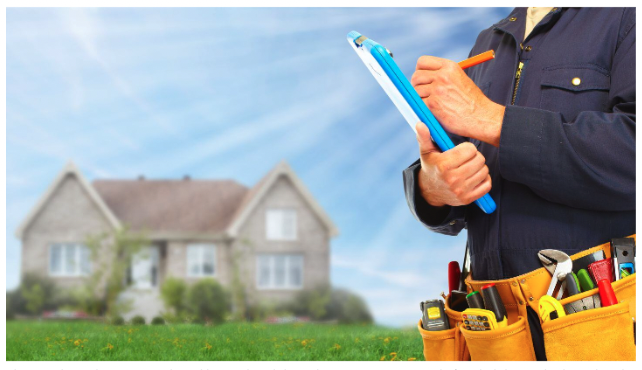

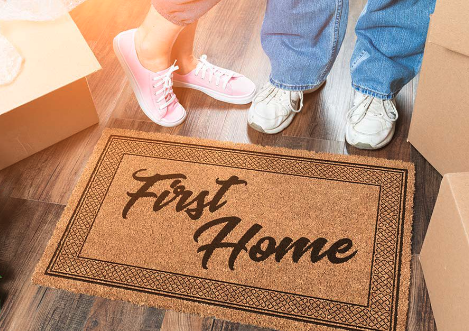
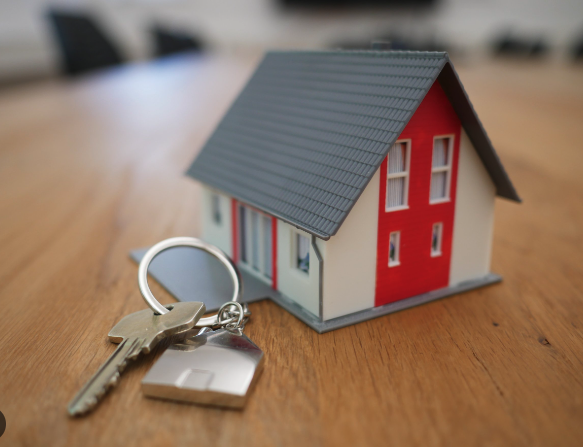

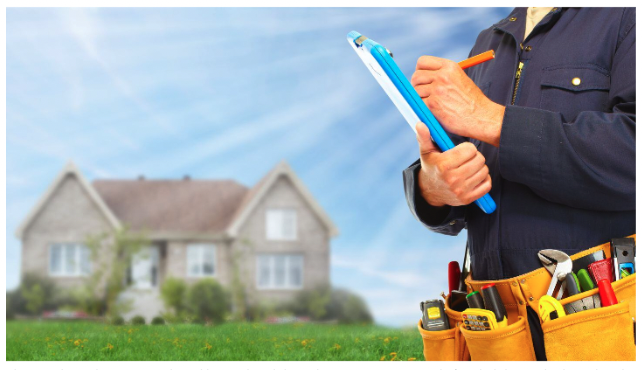
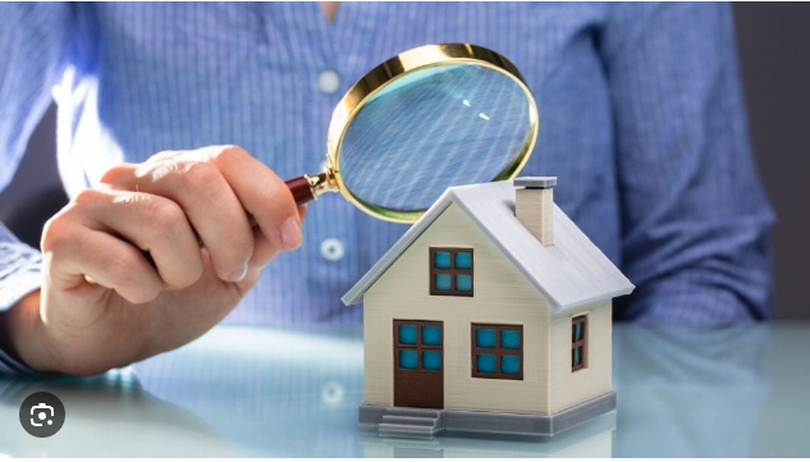

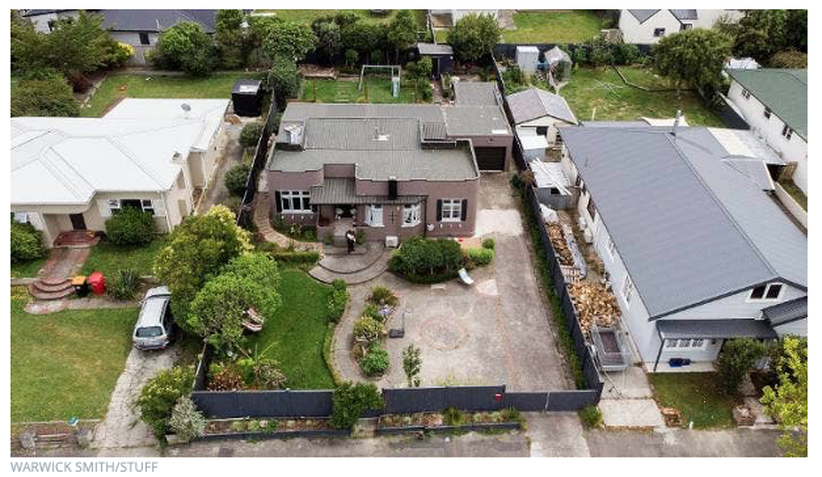
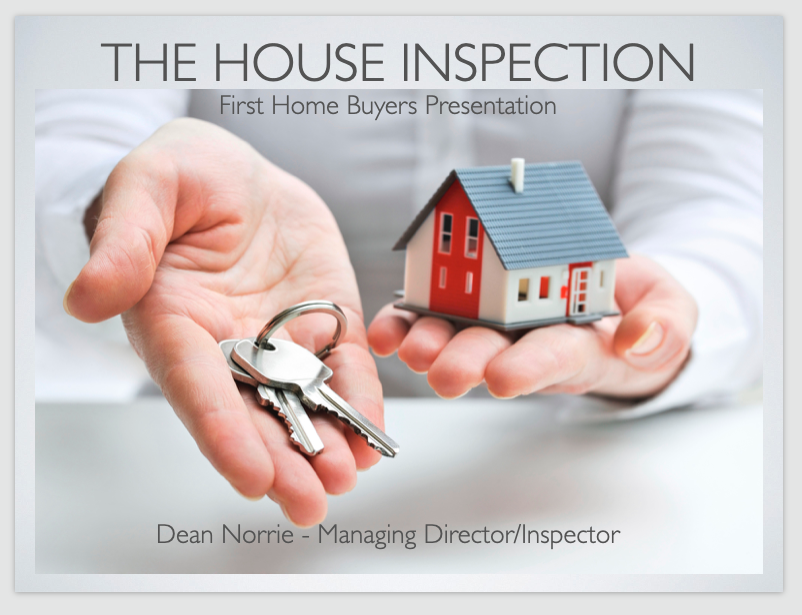

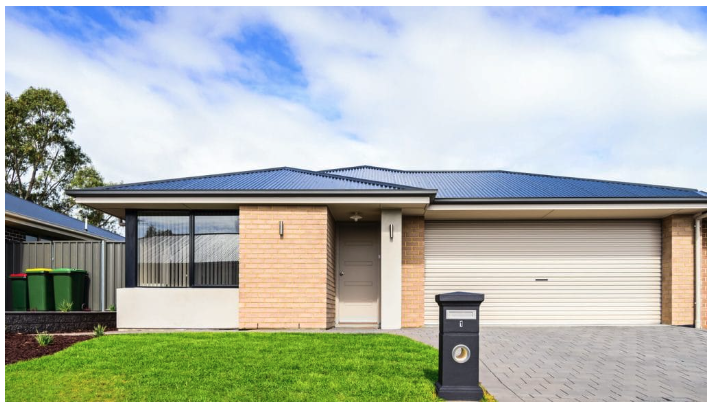
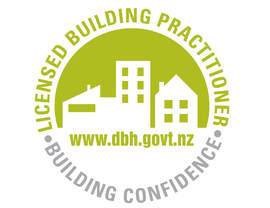


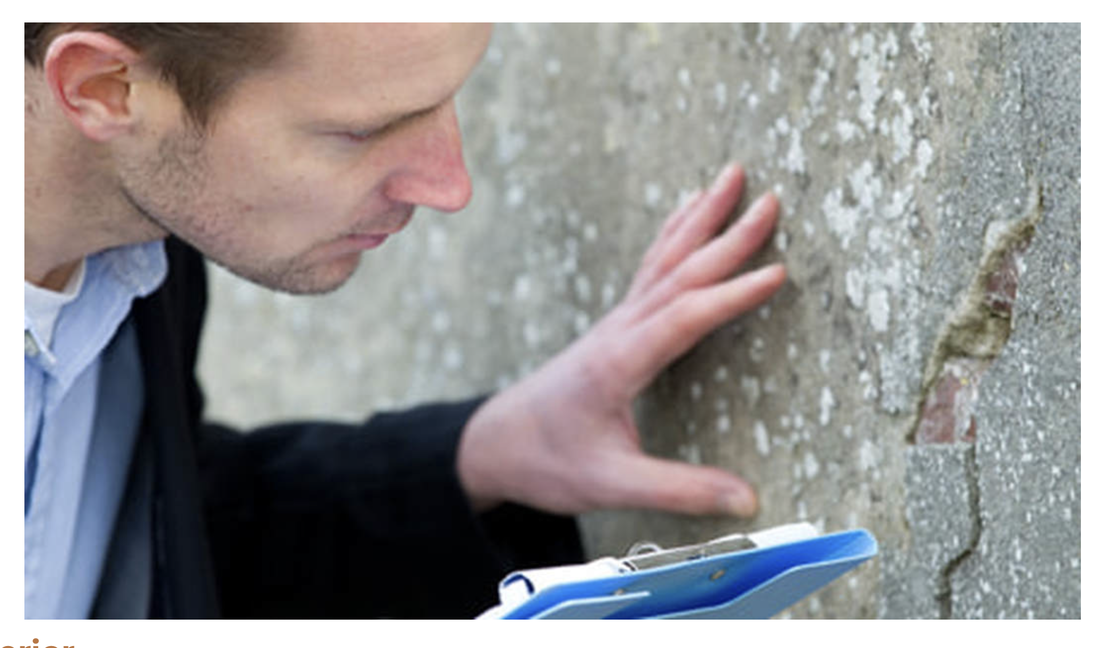
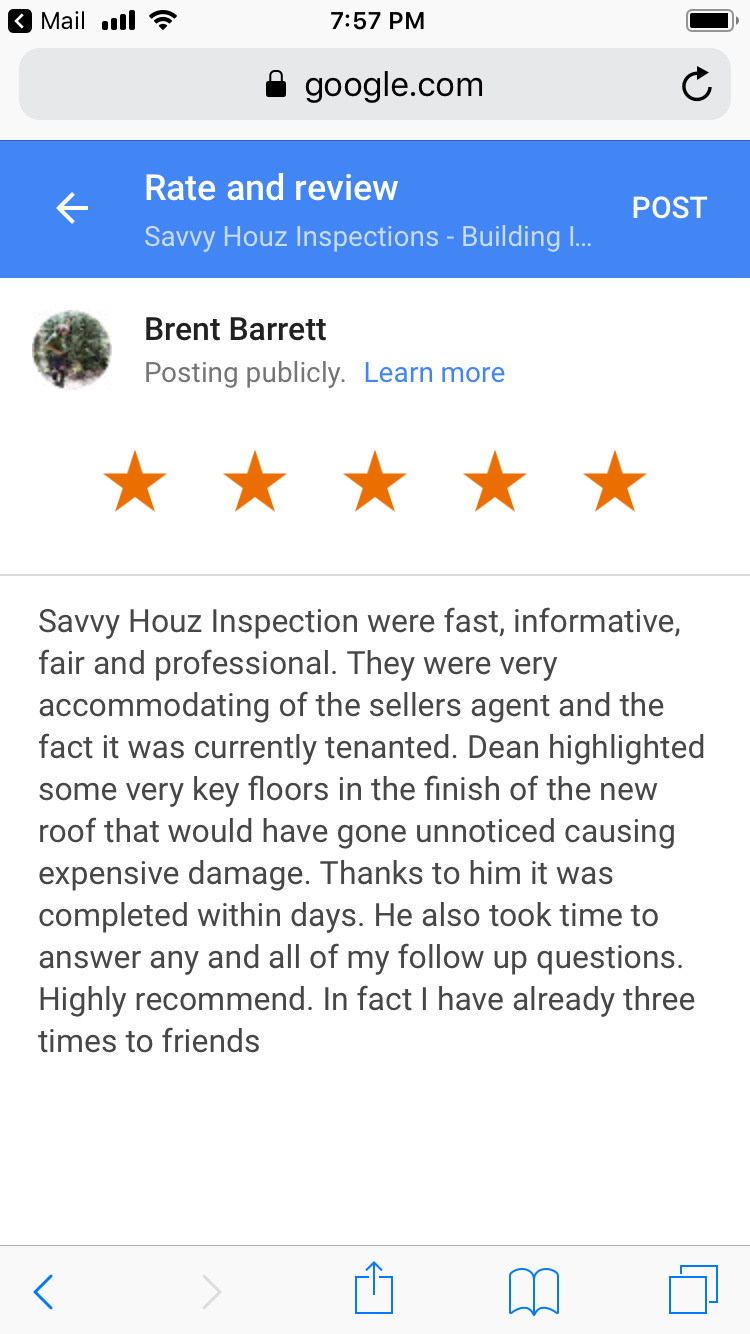

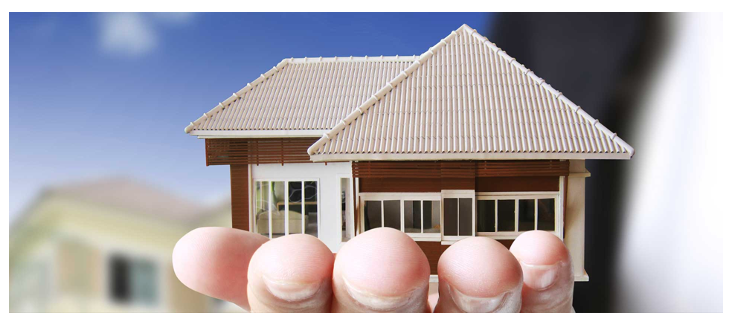
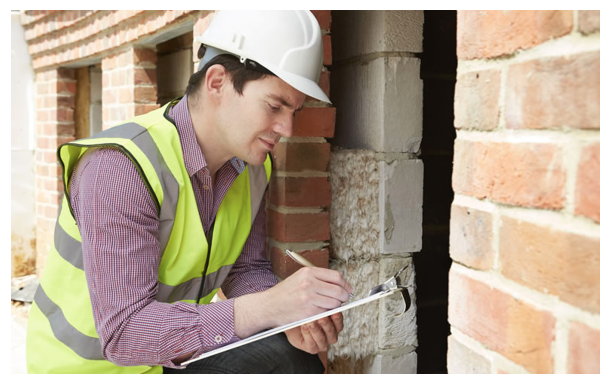
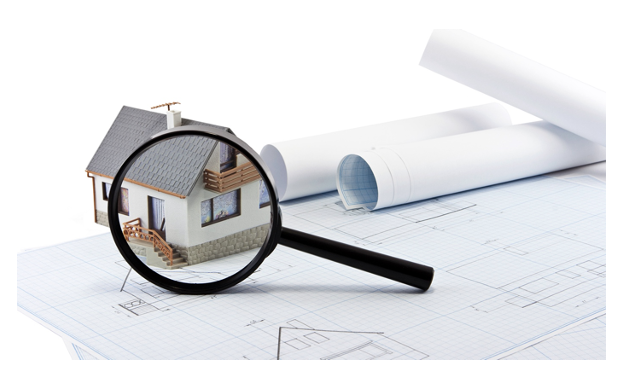
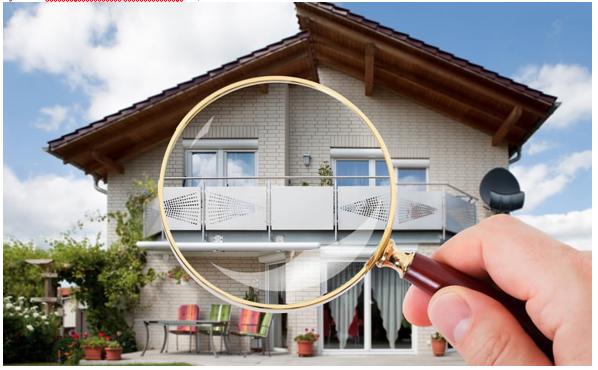

 RSS Feed
RSS Feed